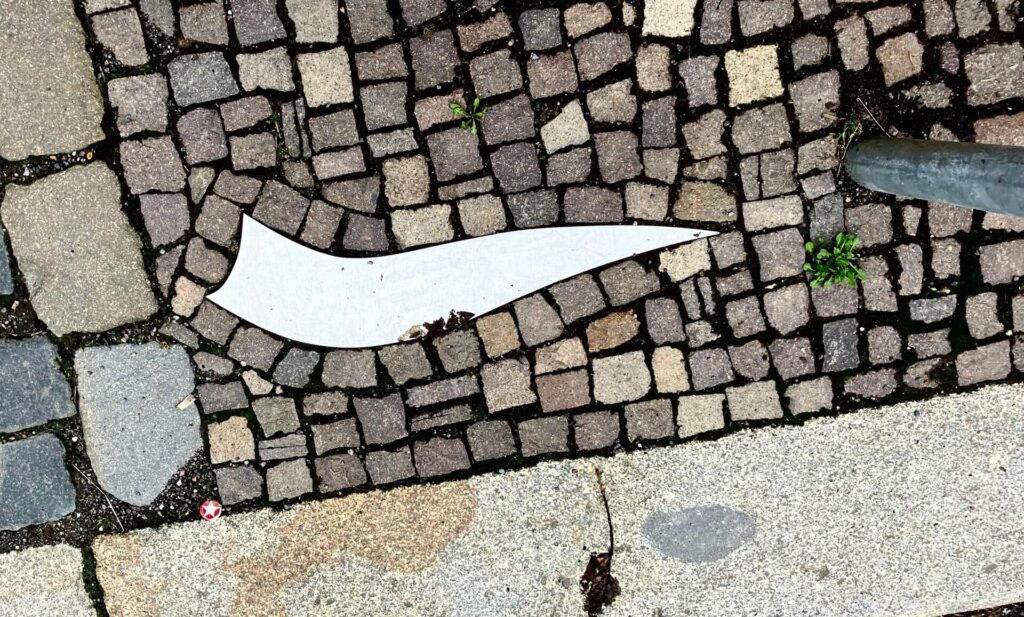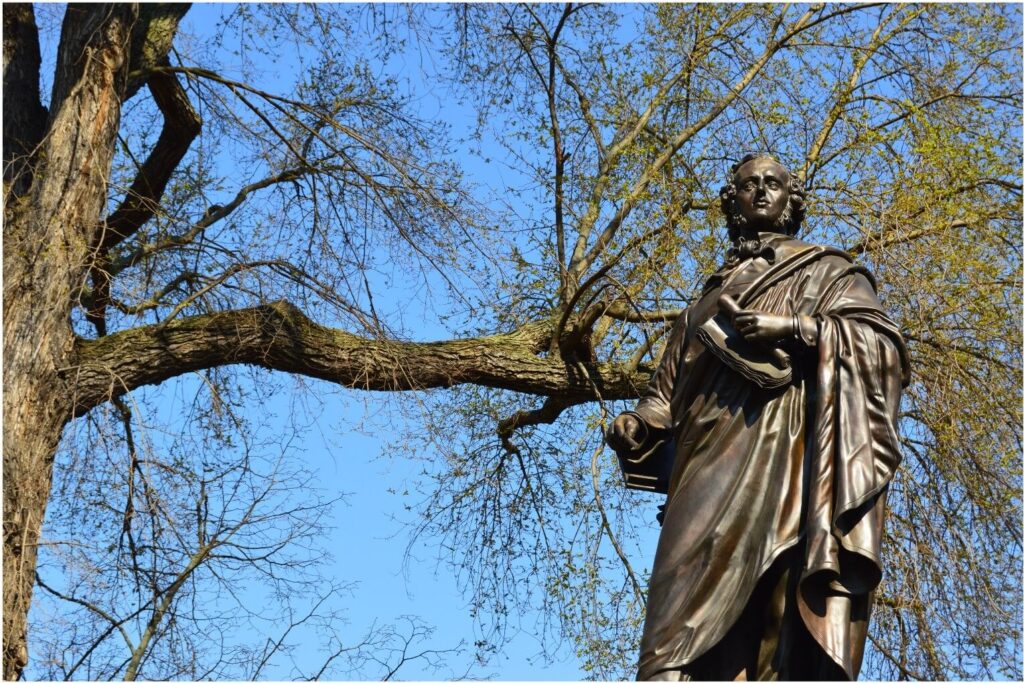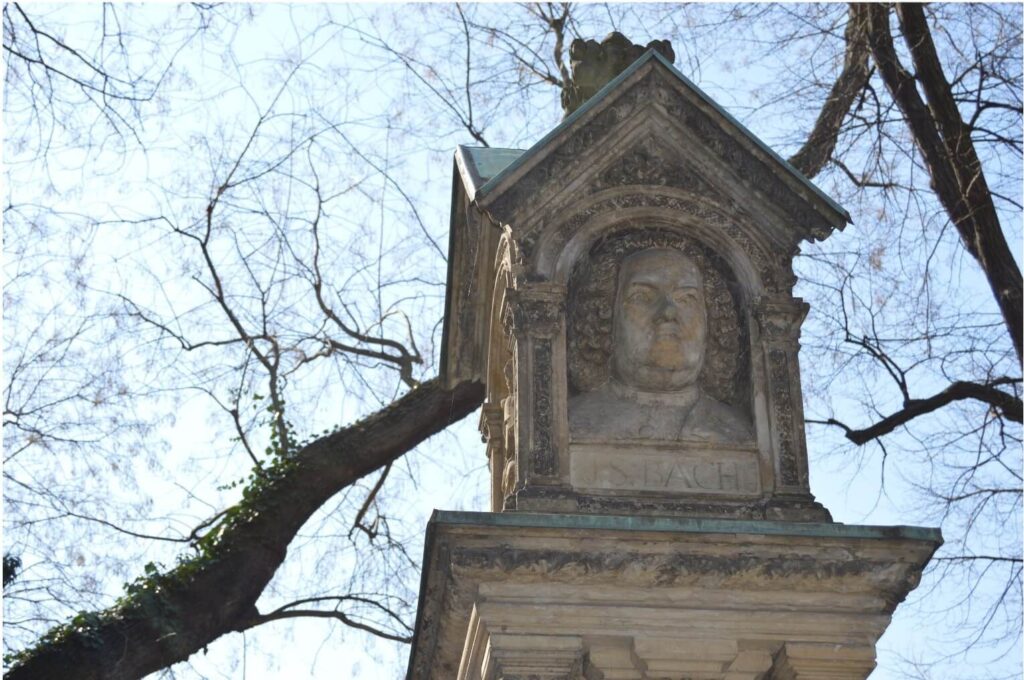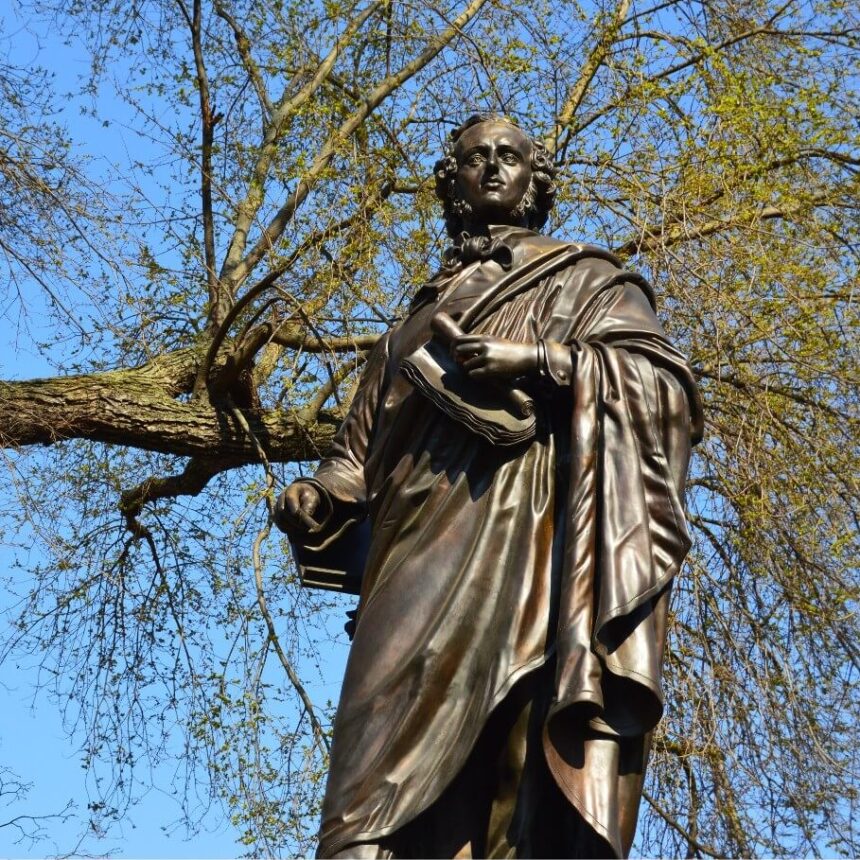by Nina Lindner and Hend Hesham
First Impressions
The continuous staccato of raindrops on the glass roof of Leipzig Main Railway Station engulfs its halls as I step on the platform. Perfect weather for a city stroll. As I head towards the main hall, I glance at the large banners attached to the glass panes between the platform hall and main hall: Leipzig Gewandhaus-Orchester (Gewandhaus-orchestra) and Thomannenchor are among the first to be announced to the arriving visitors. Hard to miss, Leipzig takes pride in its musical heritage. Waiting for the rain to stop, I step into the station’s bookshop. The most prominent bookshelf facing the entrance is dedicated to music: next to serious biographical publications and volumes on the various institutions you’ll find mainly one thing: Bach souvenirs. From kitschy figurines and cartoons to stationery and fridge magnets. Apparently, Bach sells. I flick through a guide on Musical Leipzig, amazed by how many musicians it associates with the city. Yet, none of them were awarded souvenir status.
The Sidewalk’s Narrative
Out of the buzzing station, and across the broad road, I head aimlessly into the narrow roads of Leipzig’s inner city. Mercifully, the rain has stopped. Navigating around the deep puddles, I catch sight of an odd, longish silver shape embedded in the pavement. Regarding it more closely, I decipher “Leipziger Notenspur” (Leipzig Music Trail) engraved in the metal. I look around but nothing explicitly music-related is to be seen. Merely, a café called “Zum Arabischen Coffee Baum”. I resign and look up “Leipziger Notenspur” on the internet. A map and a description, listing 21 stations, appear. Felix Mendelssohn-Bartholdy, Richard Wagner, Robert and Clara Schumann, Edvard Grieg, and Johann Sebastian Bach are represented at various stations. My location is entitled “The Arabian Coffee Tree”, once popular amongst the Romantic composer Robert Schumann and his colleagues for their get-togethers. At first sight, the music trail seems like a somewhat arbitrary accumulation of notable European composers who ever set foot in Leipzig.
Yet, in 2017, Leipzig’s Musical Heritage Sites were assigned the European Heritage Label, honouring its contribution to European connectedness. Very likely that it holds more than first meets the eye.

(Dis-)Remembering?
Following the “trail” on my phone, I reach St. Thomas Church. This, of course, is where its former cantor Johann Sebastian Bach is featured excessively. A museum, gift shop, and bronze statue are assembled in front of the church. The “trail”, however, leads me to the greenery on the other side of the church. And here, I behold two memorials, some distance apart, but placed on one axis, in clear reference to the other. The larger monument, 6.8 meters in total, is a representation of Felix Mendelssohn Bartholdy, an Early-Romantic composer, the innovative director of the Gewandhaus-Orchester and founder of Leipzig’s Conservatory. Undeniably, his imprint on the city’s institutions has been immense. And he has started the Bach-Mania that persists in Leipzig to this day. Overshadowed by his sons during his lifetime and almost forgotten soon after his death, Johann Sebastian Bach was by no means a familiar name in the early 19th century. Mendelssohn, who held Bach’s works in reverent regard, not only established Bach’s oeuvre in his concert repertoire but also commissioned the first memorial for J. S. Bach – the delicately hewn sandstone column bearing Bach’s bust that is to be found across the green. This juxtaposition is not only memorable for its reference to the Western classical canon. On a deeper level, it reveals the selectiveness of remembering: Even though both memorials employ antique ornaments popular in the 19th century, their genesis were by no means congruent. While Bach’s memorial has remained in the same place since its erection in 1843, Mendelssohn’s has had a rather chequered history. In 1892, after decades of planning, Mendelssohn was commemorated with a 2.9-meter bronze statue on a granite pedestal in front of the second Gewandhaus. It only remained in this position until 1936. On the night of the 9th November, the Nazis demolished Mendelssohn’s memorial in their attempt to annihilate the memory of the artist of Jewish descent. The granite was sold, but the whereabouts of the bronze remains unknown. With that, the Wilhelminian original, in its material form, vanished entirely. In the post-war years, slight modern sculptures of Mendelssohn, such as the bust by Walter Arnold at the site of the 1892 memorial, were one by one erected in public spaces and are today a recurring motif in Leipzig’s cityscape. Still, many of Leipzig’s citizens lamented that Mendelssohn’s legacy was not visible enough. Finally in 2008, the year of Mendelssohn’s 200th birthday, a replica of the Wilhelminian statue was unveiled. Not at its original location but in juxtaposition to Mendelssohn’s gift to Leipzig, the Old Bach Memorial.


From the vast archive we call memory only particular assets are made visible. These are the parts of history that live on in the present and form part of our collective identity.
Leipzig with its Music trail chose to define itself as a hub of musical exchange by visualizing and connecting the traces of the various artists. Thus, the city’s buildings, its streets, its memorials, and monuments tell the story of a place for inspiration, the exchange of ideas, and creating together.
If you wish to contact the authors of this article, please send an email to community@europeanheritagetimes.eu
